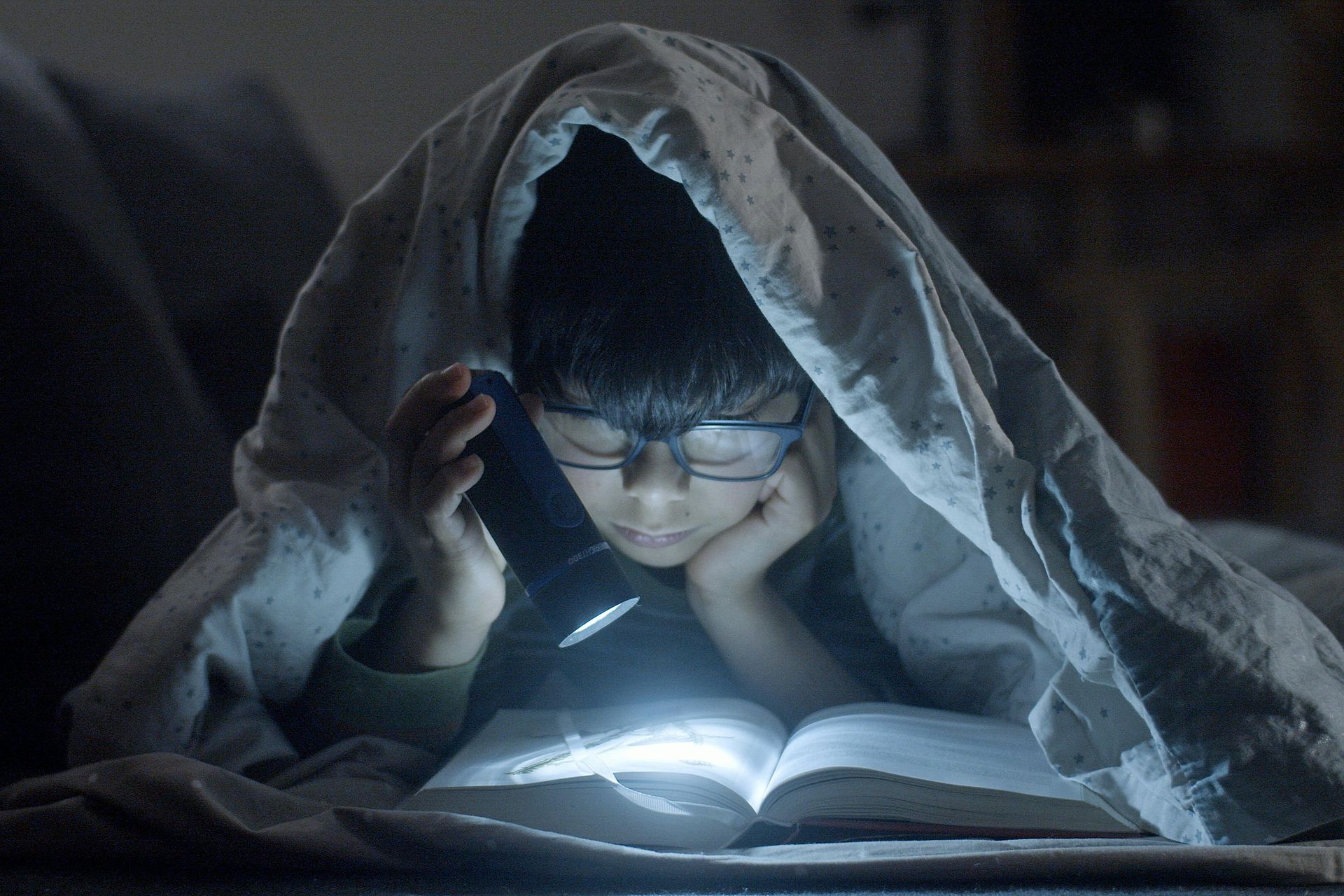The Power of Nostalgia in Branding: Understanding and Implementing
AJ Oberlender

Every brand has a story to tell, a narrative that defines its personality, ethos, and overall identity. As we embark on the next chapter of branding in 2023, there’s a new trend that’s catching everyone’s eye: daring nostalgia. This innovative approach to branding takes consumers on a trip down memory lane, creating a sense of familiarity and comfort while still retaining an air of novelty and excitement. This blog post will explore the concept of daring nostalgia, delve into the science behind its impact, and provide practical guidance on how to incorporate it into your brand strategy.
Daring nostalgia is more than just a mere attempt to recapture the past; it’s a bold and audacious approach to brand storytelling that combines elements of the past with a fresh and modern twist. This technique is not about trying to recreate a bygone era, but rather to evoke feelings and emotions associated with the past while remaining relevant in the present. It’s about daring to challenge the status quo, to defy the norms, and to tell a story that resonates with audiences on a deep, emotional level.
Nostalgia is more than a mere sentimental longing for the past. It’s a complex emotional and psychological response, deeply rooted in our human nature. Research has shown that nostalgia can create a sense of continuity in our lives, providing us with a sense of identity and meaning.
In the context of branding, this translates into a powerful tool for forging emotional connections with consumers. By triggering nostalgic memories, brands can tap into these deep-seated emotional responses, evoking feelings of comfort, happiness, and a sense of belonging. This emotional engagement can significantly increase brand loyalty, customer satisfaction, and ultimately, consumer spending.
Nostalgia has a powerful psychological impact. It evokes feelings of comfort, warmth, and happiness, and can create a sense of longing for the past. By leveraging nostalgia in branding, brands can tap into these positive emotions and create a deep emotional connection with their audience.
In addition, nostalgia can also create a sense of belonging and community. When a brand evokes shared memories, it can bring people together and create a sense of camaraderie among its audience.
Nostalgia, by its very nature, is a safe and comforting emotion. It takes us back to a simpler time, evoking warm memories and positive feelings. But when it comes to branding, safe and comforting isn’t always what cuts through the noise. This is where daring nostalgia comes into play.
Daring nostalgia takes the familiar elements of nostalgic sentiment and combines them with bold, innovative approaches. It’s about blending the past and the future, the old and the new, in ways that are unexpected and provocative. Daring nostalgia matters because it allows brands to create a deep emotional connection with their audience while also standing out from the crowd. It’s a strategy that demands attention, sparks conversation, and fosters a sense of loyalty and engagement among consumers.
Brands have long recognized the power of storytelling in connecting with their audience, and nostalgia adds a potent layer to this strategy. Nostalgic brand storytelling goes beyond mere reminiscence; it involves weaving a compelling narrative that draws from the past while connecting to the present and the future.
This could involve telling the story of the brand’s origins and growth over the years, or perhaps sharing stories that reflect the brand’s role in societal or cultural trends from the past. It’s about creating a narrative that is not only engaging and emotionally resonant but also authentic and true to the brand’s identity and values.
One of the key reasons why nostalgia works so effectively in branding is because it capitalizes on shared memories. When a brand taps into these shared memories, it creates a sense of connection and camaraderie among its audience. It makes the audience feel seen and understood, and this can create a strong emotional bond between the brand and its consumers.
For example, a brand that uses imagery or references from the 80s or 90s in its branding is likely to resonate with consumers who grew up during that era. These consumers will likely feel a sense of nostalgia, a warmth, and a connection to the brand that is leveraging these shared memories. This connection can build brand loyalty, increase customer retention, and ultimately drive business growth.
Retro design techniques are a fantastic way to imbue your brand with a sense of nostalgia. Here are a few techniques you can use:
Nostalgia isn’t just a powerful emotional response; it’s also a driving force behind consumer behavior. It can influence purchasing decisions, brand loyalty, and even the perceived value of a product or service.
Research has shown that consumers are more likely to purchase from brands that evoke a sense of nostalgia. This is because nostalgia can create a sense of comfort and familiarity, which can make a brand seem more trustworthy and appealing. Furthermore, nostalgia can also enhance the perceived value of a product or service, making consumers more willing to pay a premium for it.
Creating a nostalgic brand identity is about more than just incorporating nostalgic elements into your branding. It’s about weaving a nostalgic narrative throughout every aspect of your brand, from your visuals and messaging to your customer experiences and product offerings.
A nostalgic brand identity can be incredibly powerful, helping to differentiate your brand in a crowded market, create a deep emotional connection with your audience, and build a strong and loyal customer base. However, it’s important to approach this strategy with care, ensuring that your nostalgic branding feels authentic and resonates with your target audience.
Incorporating nostalgia into branding is both an art and a science. It requires an understanding of your target audience, a deep dive into their memories and experiences, and a creative approach to bringing these elements together. Here are some key steps to consider:
The integration of nostalgia into branding goes beyond just the use of retro logos or old-fashioned advertisements. It’s about creating a comprehensive brand identity that consistently echoes the past while staying relevant to the present.
This can be reflected in various branding elements, from color schemes and typography that evoke certain eras, to product packaging that recalls classic designs, to advertising campaigns that reference cultural milestones. The key is to ensure that these nostalgic elements are seamlessly integrated into the overall brand identity, creating a cohesive and consistent brand experience.
While nostalgia can be a powerful tool in branding, it’s important to strike a balance between nostalgia and modernity. If a brand leans too heavily on nostalgia, it can come across as outdated or irrelevant. On the other hand, if a brand ignores nostalgia altogether, it can miss out on the opportunity to create a deep emotional connection with its audience.
Striking the right balance between nostalgia and modernity requires a nuanced understanding of your target audience, a clear vision for your brand, and a creative approach to branding. It’s about combining the warmth and familiarity of the past with the excitement and innovation of the present, creating a brand that feels both comforting and fresh.
Balancing nostalgia and innovation in branding can be a delicate act. On one hand, you want to evoke feelings of nostalgia among your audience, but on the other hand, you want to stay ahead of the curve and continue to innovate.
One effective way to strike this balance is by using nostalgia as a foundation for your branding, but then building upon it with innovative elements. For example, you could use a retro-inspired logo but pair it with modern typography and color schemes. Alternatively, you could tell a nostalgic brand story but do so through innovative mediums like VR or interactive digital content.
While leveraging nostalgia can be a powerful branding strategy, it’s important to ensure that your brand remains timeless. This means maintaining a balance between past and present, and ensuring that your brand continues to evolve and stay relevant.
You can achieve this by blending elements of the past with modern design trends, keeping your brand’s messaging up to date with current societal values and norms, and continuously innovating in your product or service offerings.
Implementing nostalgia in your branding strategy is more than just a retro aesthetic or a throwback reference. It’s about tapping into the emotional reservoir of your audience, creating a powerful connection that transcends the typical consumer-brand relationship. By understanding the science and psychology of nostalgia, and by thoughtfully integrating it into your branding, you can create a brand experience that is not only memorable but also deeply meaningful.
Stay tuned for our next post where we’ll dive into real-world case studies, tackle challenges, and explore the future of nostalgic branding.
The Concept of Daring Nostalgia
Daring nostalgia is more than just a mere attempt to recapture the past; it’s a bold and audacious approach to brand storytelling that combines elements of the past with a fresh and modern twist. This technique is not about trying to recreate a bygone era, but rather to evoke feelings and emotions associated with the past while remaining relevant in the present. It’s about daring to challenge the status quo, to defy the norms, and to tell a story that resonates with audiences on a deep, emotional level.
The Science Behind Nostalgia in Branding
Nostalgia is more than a mere sentimental longing for the past. It’s a complex emotional and psychological response, deeply rooted in our human nature. Research has shown that nostalgia can create a sense of continuity in our lives, providing us with a sense of identity and meaning.
In the context of branding, this translates into a powerful tool for forging emotional connections with consumers. By triggering nostalgic memories, brands can tap into these deep-seated emotional responses, evoking feelings of comfort, happiness, and a sense of belonging. This emotional engagement can significantly increase brand loyalty, customer satisfaction, and ultimately, consumer spending.
The Psychological Impact of Nostalgia in Branding
Nostalgia has a powerful psychological impact. It evokes feelings of comfort, warmth, and happiness, and can create a sense of longing for the past. By leveraging nostalgia in branding, brands can tap into these positive emotions and create a deep emotional connection with their audience.
In addition, nostalgia can also create a sense of belonging and community. When a brand evokes shared memories, it can bring people together and create a sense of camaraderie among its audience.
Why Daring Nostalgia Matters
Nostalgia, by its very nature, is a safe and comforting emotion. It takes us back to a simpler time, evoking warm memories and positive feelings. But when it comes to branding, safe and comforting isn’t always what cuts through the noise. This is where daring nostalgia comes into play.
Daring nostalgia takes the familiar elements of nostalgic sentiment and combines them with bold, innovative approaches. It’s about blending the past and the future, the old and the new, in ways that are unexpected and provocative. Daring nostalgia matters because it allows brands to create a deep emotional connection with their audience while also standing out from the crowd. It’s a strategy that demands attention, sparks conversation, and fosters a sense of loyalty and engagement among consumers.
Nostalgia in Brand Storytelling
Brands have long recognized the power of storytelling in connecting with their audience, and nostalgia adds a potent layer to this strategy. Nostalgic brand storytelling goes beyond mere reminiscence; it involves weaving a compelling narrative that draws from the past while connecting to the present and the future.
This could involve telling the story of the brand’s origins and growth over the years, or perhaps sharing stories that reflect the brand’s role in societal or cultural trends from the past. It’s about creating a narrative that is not only engaging and emotionally resonant but also authentic and true to the brand’s identity and values.
Creating a Connection with Audience through Shared Memories
One of the key reasons why nostalgia works so effectively in branding is because it capitalizes on shared memories. When a brand taps into these shared memories, it creates a sense of connection and camaraderie among its audience. It makes the audience feel seen and understood, and this can create a strong emotional bond between the brand and its consumers.
For example, a brand that uses imagery or references from the 80s or 90s in its branding is likely to resonate with consumers who grew up during that era. These consumers will likely feel a sense of nostalgia, a warmth, and a connection to the brand that is leveraging these shared memories. This connection can build brand loyalty, increase customer retention, and ultimately drive business growth.
Retro Design Techniques for Modern Brands
Retro design techniques are a fantastic way to imbue your brand with a sense of nostalgia. Here are a few techniques you can use:
- Color Schemes: Retro color schemes often incorporate earth tones, pastels, and bold, contrasting colors. Try incorporating these into your branding to give it a retro feel.
- Typography: There’s nothing quite like a retro typeface to transport your audience back in time. Consider using fonts that were popular in the era you’re looking to evoke.
- Imagery: Using images that reflect the past can instantly create a sense of nostalgia. This could be through the use of vintage photographs, retro illustrations, or even old-fashioned patterns and textures.
- Layouts: Traditional print layouts, such as those used in newspapers or vintage advertisements, can also give your branding a nostalgic feel.
- Logos:
Consider creating a retro-inspired logo for your brand. This could be a modern take on a classic design, or a completely new design that incorporates retro elements.
How Nostalgia Impacts Consumer Behavior
Nostalgia isn’t just a powerful emotional response; it’s also a driving force behind consumer behavior. It can influence purchasing decisions, brand loyalty, and even the perceived value of a product or service.
Research has shown that consumers are more likely to purchase from brands that evoke a sense of nostalgia. This is because nostalgia can create a sense of comfort and familiarity, which can make a brand seem more trustworthy and appealing. Furthermore, nostalgia can also enhance the perceived value of a product or service, making consumers more willing to pay a premium for it.
Creating a Nostalgic Brand Identity
Creating a nostalgic brand identity is about more than just incorporating nostalgic elements into your branding. It’s about weaving a nostalgic narrative throughout every aspect of your brand, from your visuals and messaging to your customer experiences and product offerings.
A nostalgic brand identity can be incredibly powerful, helping to differentiate your brand in a crowded market, create a deep emotional connection with your audience, and build a strong and loyal customer base. However, it’s important to approach this strategy with care, ensuring that your nostalgic branding feels authentic and resonates with your target audience.
How to Incorporate Nostalgia into Branding
Incorporating nostalgia into branding is both an art and a science. It requires an understanding of your target audience, a deep dive into their memories and experiences, and a creative approach to bringing these elements together. Here are some key steps to consider:
- Identify your audience’s nostalgia points: What periods, events, or experiences are your target audiences likely to remember fondly? These could be cultural moments, popular trends, or even personal experiences.
- Create a nostalgic narrative: Once you have identified these nostalgia points, the next step is to weave them into your brand’s narrative. This could be done through your brand’s visuals, messaging, product design, or even customer experiences.
- Modernize it:
While the essence of nostalgia lies in the past, your brand needs to stay relevant in the present. So, take your nostalgic narrative and give it a modern twist. This could be done through contemporary design elements, modern language, or current trends.
Integrating Nostalgia into Branding Elements
The integration of nostalgia into branding goes beyond just the use of retro logos or old-fashioned advertisements. It’s about creating a comprehensive brand identity that consistently echoes the past while staying relevant to the present.
This can be reflected in various branding elements, from color schemes and typography that evoke certain eras, to product packaging that recalls classic designs, to advertising campaigns that reference cultural milestones. The key is to ensure that these nostalgic elements are seamlessly integrated into the overall brand identity, creating a cohesive and consistent brand experience.
The Balance Between Nostalgia and Modernity
While nostalgia can be a powerful tool in branding, it’s important to strike a balance between nostalgia and modernity. If a brand leans too heavily on nostalgia, it can come across as outdated or irrelevant. On the other hand, if a brand ignores nostalgia altogether, it can miss out on the opportunity to create a deep emotional connection with its audience.
Striking the right balance between nostalgia and modernity requires a nuanced understanding of your target audience, a clear vision for your brand, and a creative approach to branding. It’s about combining the warmth and familiarity of the past with the excitement and innovation of the present, creating a brand that feels both comforting and fresh.
Balancing Nostalgia and Innovation in Branding
Balancing nostalgia and innovation in branding can be a delicate act. On one hand, you want to evoke feelings of nostalgia among your audience, but on the other hand, you want to stay ahead of the curve and continue to innovate.
One effective way to strike this balance is by using nostalgia as a foundation for your branding, but then building upon it with innovative elements. For example, you could use a retro-inspired logo but pair it with modern typography and color schemes. Alternatively, you could tell a nostalgic brand story but do so through innovative mediums like VR or interactive digital content.
How to Keep Your Brand Timeless While Using Nostalgia
While leveraging nostalgia can be a powerful branding strategy, it’s important to ensure that your brand remains timeless. This means maintaining a balance between past and present, and ensuring that your brand continues to evolve and stay relevant.
You can achieve this by blending elements of the past with modern design trends, keeping your brand’s messaging up to date with current societal values and norms, and continuously innovating in your product or service offerings.
Conclusion
Implementing nostalgia in your branding strategy is more than just a retro aesthetic or a throwback reference. It’s about tapping into the emotional reservoir of your audience, creating a powerful connection that transcends the typical consumer-brand relationship. By understanding the science and psychology of nostalgia, and by thoughtfully integrating it into your branding, you can create a brand experience that is not only memorable but also deeply meaningful.
Stay tuned for our next post where we’ll dive into real-world case studies, tackle challenges, and explore the future of nostalgic branding.
By AJ Oberlender
•
February 26, 2025
Elevate your brand with our tailored web design templates. Enhance user experience and create effective branding that captivates your audience today!

By AJ Oberlender
•
October 29, 2023
In the realm of marketing, where competition is fierce, and attention spans are fleeting, how do you make your brand stand out? How do you not only grab your audience’s attention but hold it, engage it, and convert it into tangible business growth? The answer lies in one of humanity’s oldest practices: storytelling. Welcome to the world of brand storytelling. Brand Storytelling: The Ultimate Catalyst for Audience Engagement Before we delve into the mechanics of brand storytelling, it is vital to understand what it encompasses. Simply put, brand storytelling is the cohesive narrative that weaves together the facts and feelings associated with your brand. It’s not merely what you sell; it’s why you sell it, who you are, your mission, your vision, your values, and the unique journey that has led you to where you are today. It’s your brand identity presented in a relatable, human way. But why is brand storytelling so powerful? Well, the secret lies in its ability to forge an emotional connection with the audience. As human beings, we are wired for stories. Stories move us, inspire us, make us feel part of something larger than ourselves. They help us understand complex ideas, evoke emotions, and compel us to act. By telling your brand’s story, you tap into this primal power, captivating your audience and fostering a deeper, more meaningful engagement with your brand. The Brand Identity Nexus Brand storytelling and brand identity are two sides of the same coin. Your brand identity is the unique set of characteristics that distinguish your brand from others. It encompasses your brand’s personality, values, ethos, and unique selling proposition. In contrast, brand storytelling is the art of expressing this identity in a compelling narrative. As such, a strong brand story starts with a well-defined brand identity. It answers critical questions such as: Who are you as a brand? What do you stand for? What are your values and how do they align with your audience’s values? What is your brand’s personality, and how does it reflect in your offerings, interactions, and communications? What is your brand’s unique selling proposition? Your brand story then takes these elements and weaves them into a narrative that your audience can connect with emotionally. It moves beyond sterile facts and statistics and imbues your brand with life and personality. Content Marketing: The Vehicle for Your Brand Story Once you’ve crafted your brand story, the next step is to share it with the world, and this is where content marketing comes in. Content marketing is the strategic marketing approach focused on creating and distributing valuable, relevant, and consistent content to attract and retain a clearly defined audience – ultimately, to drive profitable customer action. The key to effective content marketing lies in offering value to the audience. This goes beyond merely pitching your products or services and delves into providing useful, engaging content that addresses your audience’s needs and interests. In the context of brand storytelling, content marketing becomes the vehicle for your narrative. Whether it’s through blog posts, videos, podcasts, social media updates, newsletters, or interactive media, each piece of content you produce becomes a chapter in your brand story. However, remember that consistency is crucial. Your brand story should permeate all your content, creating a unified brand image that reinforces your identity and values. Consistency breeds familiarity, and familiarity breeds trust – a critical factor in building loyal customer relationships and driving business growth. Driving Business Growth Through Brand Storytelling So, how does brand storytelling translate into tangible business growth? Here are four primary ways: 1. Enhancing Brand Recall: A compelling brand story is memorable. It helps your brand stand out in a saturated market and stays in the minds of your audience. This improved brand recall can significantly impact your brand awareness and visibility, drawing in new prospects and keeping your brand top-of-mind for existing customers. 2. Building Trust and Loyalty: By humanizing your brand and aligning it with your audience’s values, brand storytelling fosters trust and loyalty. Customers are more likely to stick with and advocate for brands they trust and share values with. This not only improves customer retention but can also drive word-of-mouth referrals, both of which are critical for business growth. 3. Driving Customer Engagement: Engaged customers are valuable customers. They are more likely to purchase from your brand, share their positive experiences, and become brand advocates. By captivating your audience with your brand story, you enhance their engagement with your brand, driving these positive behaviors. 4. Influencing Purchase Decisions: Emotional connections can significantly influence purchase decisions. By telling a compelling brand story that resonates emotionally with your audience, you can sway their purchase decisions in your favor, leading to increased sales and business growth. Putting It All Together In conclusion, brand storytelling is a powerful tool for captivating your audience and driving business growth. By defining your brand identity, weaving it into a compelling narrative, and disseminating it through consistent content marketing, you can enhance brand recall, build trust and loyalty, drive customer engagement, and influence purchase decisions. Brand storytelling is not a quick fix or a one-time project; it’s an ongoing journey. It requires authenticity, creativity, and a deep understanding of your audience. But, when done right, the rewards are worth the effort. So, start crafting your brand story today, and watch as it unlocks new potentials for your business growth. Remember, your brand is not just what you sell; it’s the story you tell. So make it a good one.








